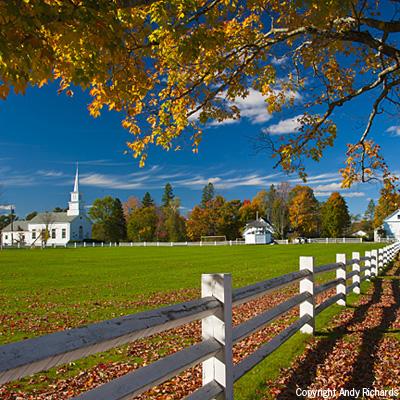Seasonal and Permanent Residents in Northern Forest Amenity Resource Communities: Community Well-being in the Context of Social Change

A 2000 Northern Forest Center report identified indicators of the overall well-being of a region. These included social capital (a community asset), maintenance of cultural identity and traditions, and several economic assets (e.g., local control of wealth, and recreation and tourism development). To better understand demographic, social, cultural, and economic transformations affecting rural communities in amenity-rich regions of the Northern Forest, NSRC researchers assessed community well-being in four Vermont towns: Cabot, Craftsbury, Eden, and Waitsfield. These towns are characterized by different histories, types of resource-based amenities, and economic circumstances.
Researchers interviewed town leaders to understand patterns of community change and surveyed property owners to compare permanent and seasonal residents regarding community involvement and sense of place. Of the 548 survey respondents, 76% were permanent residents and 24%, seasonal. Across all four towns, the top reasons stated for property ownership were natural beauty and rural atmosphere. Only about half of respondents had heard of the "Northern Forest."
Permanent residents were more active in community meetings and events, but seasonal residents were more satisfied with policies and services provided and exhibited stronger levels of place identity. Slower growing communities had smaller percentages of seasonal homes and higher per capita incomes compared to faster-growing communities, which had more mixed indicators. Residents of slower-growing communities were more favorable to local management of growth. These findings can help communities better understand on-going processes of economic, social, and cultural change and can help local leaders revise planning processes to include voices of all types of residents in protecting valued local places and considering growth options.
Download printable version [PDF]
Download full final report [PDF]
